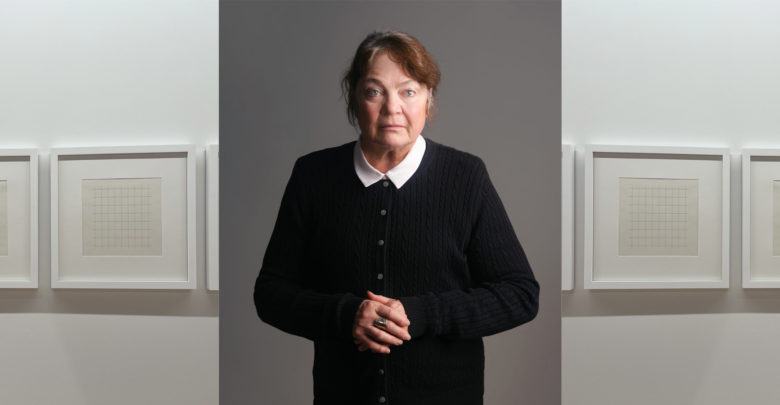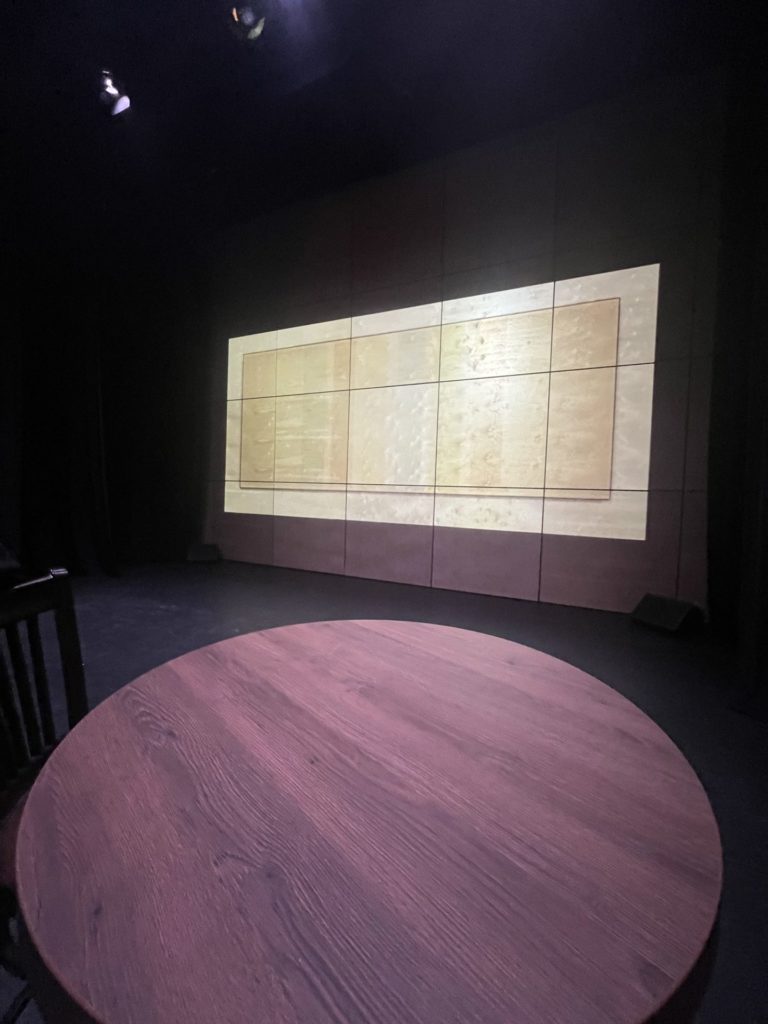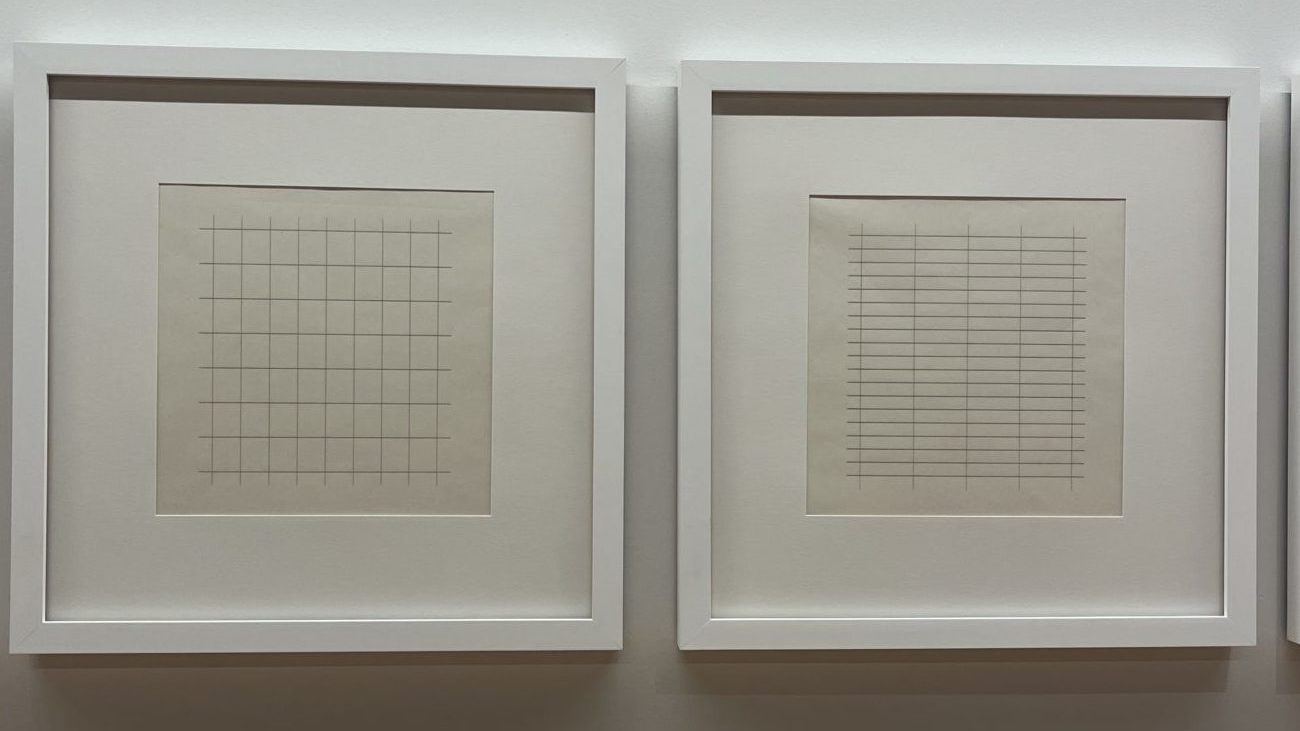The Innocence of Trees: Play exploring the life of painter Agnes Martin premieres in Edmonton
Eugene Stickland’s The Innocence of Trees reflects on memory through the eyes of abstract expressionist Agnes Martin.
 Supplied
SuppliedThe Innocence of Trees, an original play by Eugene Stickland, premiered at the recently rebuilt Roxy Theatre on November 30. This dramatic production imagines an interaction between the celebrated abstract expressionist Agnes Martin and her younger self, growing up on the Canadian prairies in Saskatchewan.
This production features only two actors: Maralyn Ryan, a three-time Sterling Award-winner with an extensive experience in Canadian theatre, and Emma Ryan, a recent Bachelor of Fine Arts Acting graduate from the University of Alberta who has experience in stage productions, film, and television.
The two women are accompanied on stage by a singular cellist, Morag Northey, an award-winning musician who has composed and performed for theatre/musicals internationally for 32 years.
The play describes the various cities Martin lived in over the course of her life, from Macklin, Saskatchewan to New York, New York, and eventually Taos, New Mexico where she spent her final years. Because Martin spent the majority of her adult life in the United States and her most well known work is exhibited in museums like the Museum of Modern Art in New York, Martin is not commonly recognized as a Canadian artist. But as the play illustrates, her time in Saskatchewan shaped her appreciation of empty spaces and influenced her famous grid work.

The play also touched on aspects of Martin’s personal life including her sexuality and mental health as someone who lived with schizophrenia. In his director’s note, Bradley Moss discusses the importance of partnering with the Morris Foundation to fund plays focused on mental health.
“Many folks live with Schizophrenia and lead productive lives, have families and friends. But that is not going to sell newspapers or get hits on the social media scene, so mostly what we get are the tragic stories that produce fears and a misunderstanding of what it is like to actually live with Schizophrenia”
Stickland considers Martin’s mental health in the context of her life as an artist attempting to join the male dominated world of modern art.
The play was accompanied by a retrospective art exhibition curated by Jared Tabler which featured work from Martin’s On A Clear Day series and photographs taken by her friend and associate Donald Woodman. In the Lorne Cardinal Theatre, a small space in the lower level of The Roxy complex, a projection displayed clips of Martin and her work. The artworks featured were small prints that played with the concept of the grid. Martin spoke about the concept of innocence of her gridwork.
“When I cover the square surface with rectangles, it lightens the weight of the square, destroys its power.”

While viewing the exhibition, I overheard another visitor say that these prints looked like label sheets. This comment illustrates a common misconception about the simplicity of Martin’s work which Stickland’s play challenges; unlike realistic work, Martin’s art is focused on feeling. The performance expanded the conversation around Martin’s artwork to create touch-points for viewers who may not understand or enjoy the lack of form in abstract expressionist art.
The Innocence of Trees highlights how the emptiness of the prairies, the liveliness of New York, and the beauty of moments in nature can be read in Martin’s work. As expressed by Martin in the play, the ultimate goal for life and art is always happiness.
The set design by Even Gilchrist and Ian Jackson, and music/sound design by Darrin Hagen and Morag Northey, contributed greatly to the reflective nature of the performance. Several canvases were hung from the ceiling and used to project various immersive scenes throughout the show. The minimalist atmospheric score was accompanied by sound effects made by the cello to evoke seagulls, trains, and more. Disembodied voices in Martin’s head were also played over speakers at several points throughout the show.
The Innocence of Trees is a discussion of art, memory, time, and place that blends the personal experience of Martin with the conceptual meaning of her artworks. Stickland’s production embodies Martin’s philosophy on art-making as an act of freedom.
“Toward freedom is the direction that the artist takes. Art work comes straight through a free mind — an open mind.”
The show runs until December 11 and tickets are available on The Theatre Network website, ranging from 25$ for students to 35$ for general admission.




